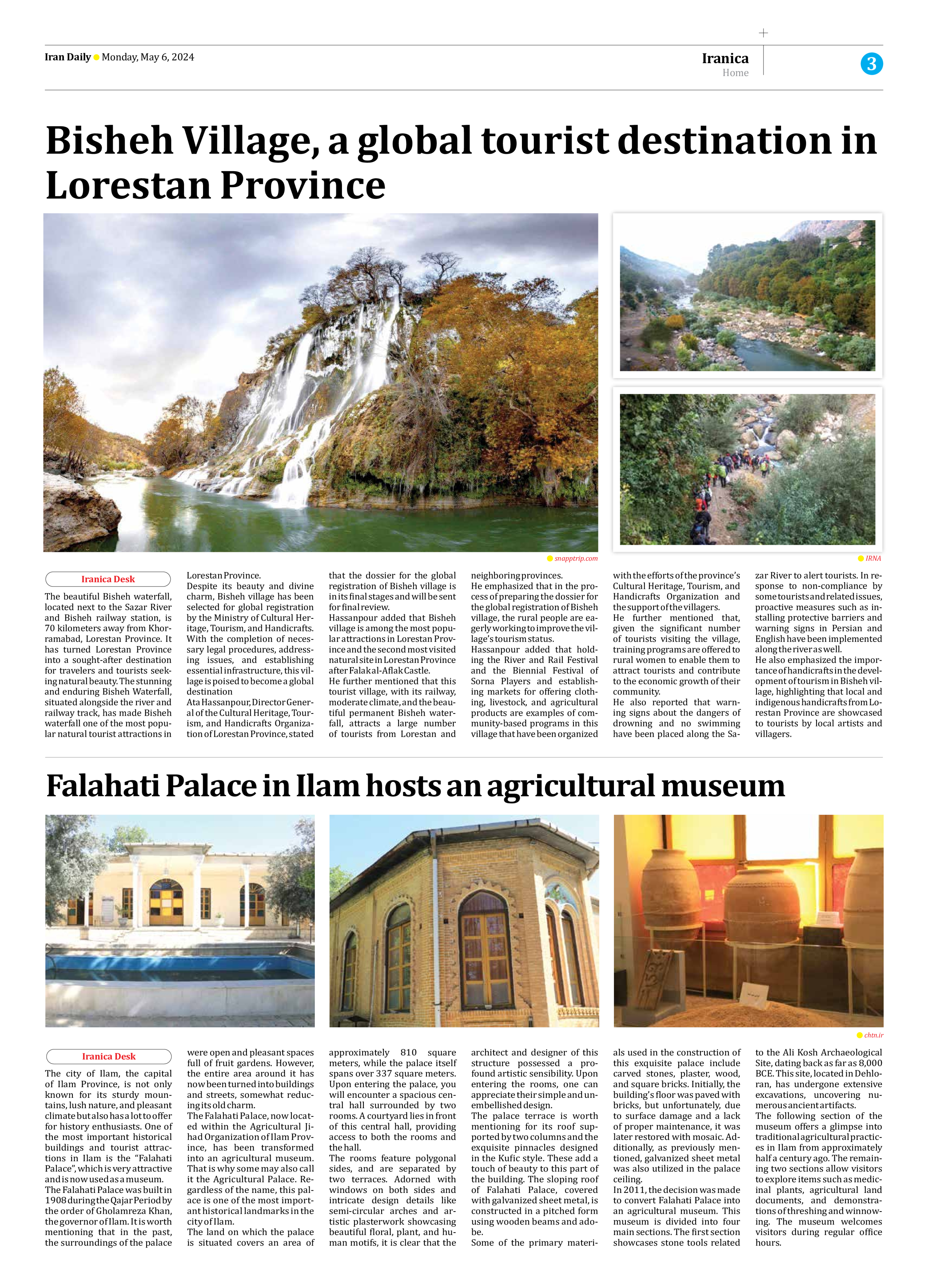
Falahati Palace in Ilam hosts an agricultural museum
The city of Ilam, the capital of Ilam Province, is not only known for its sturdy mountains, lush nature, and pleasant climate but also has a lot to offer for history enthusiasts. One of the most important historical buildings and tourist attractions in Ilam is the “Falahati Palace”, which is very attractive and is now used as a museum.
The Falahati Palace was built in 1908 during the Qajar Period by the order of Gholamreza Khan, the governor of Ilam. It is worth mentioning that in the past, the surroundings of the palace were open and pleasant spaces full of fruit gardens. However, the entire area around it has now been turned into buildings and streets, somewhat reducing its old charm.
The Falahati Palace, now located within the Agricultural Jihad Organization of Ilam Province, has been transformed into an agricultural museum. That is why some may also call it the Agricultural Palace. Regardless of the name, this palace is one of the most important historical landmarks in the city of Ilam.
The land on which the palace is situated covers an area of approximately 810 square meters, while the palace itself spans over 337 square meters. Upon entering the palace, you will encounter a spacious central hall surrounded by two rooms. A courtyard lies in front of this central hall, providing access to both the rooms and the hall.
The rooms feature polygonal sides, and are separated by two terraces. Adorned with windows on both sides and intricate design details like semi-circular arches and artistic plasterwork showcasing beautiful floral, plant, and human motifs, it is clear that the architect and designer of this structure possessed a profound artistic sensibility. Upon entering the rooms, one can appreciate their simple and unembellished design.
The palace terrace is worth mentioning for its roof supported by two columns and the exquisite pinnacles designed in the Kufic style. These add a touch of beauty to this part of the building. The sloping roof of Falahati Palace, covered with galvanized sheet metal, is constructed in a pitched form using wooden beams and adobe.
Some of the primary materials used in the construction of this exquisite palace include carved stones, plaster, wood, and square bricks. Initially, the building’s floor was paved with bricks, but unfortunately, due to surface damage and a lack of proper maintenance, it was later restored with mosaic. Additionally, as previously mentioned, galvanized sheet metal was also utilized in the palace ceiling.
In 2011, the decision was made to convert Falahati Palace into an agricultural museum. This museum is divided into four main sections. The first section showcases stone tools related to the Ali Kosh Archaeological Site, dating back as far as 8,000 BCE. This site, located in Dehloran, has undergone extensive excavations, uncovering numerous ancient artifacts.
The following section of the museum offers a glimpse into traditional agricultural practices in Ilam from approximately half a century ago. The remaining two sections allow visitors to explore items such as medicinal plants, agricultural land documents, and demonstrations of threshing and winnowing. The museum welcomes visitors during regular office hours.







